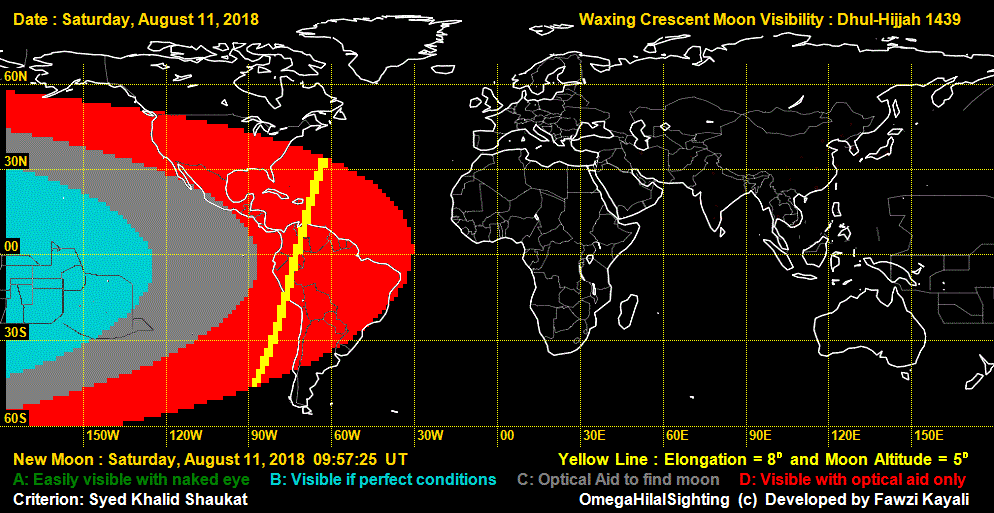MAKKAH – `Eid Al-Adha is expected to start on Wednesday, August 22, with MoonSighting.com citing astronomical calculations, as world Muslims await the final confirmation of the sighting of Dhul-Hijjah moon.
“The Astronomical New Moon (conjunction) is on August 11, 2018 (Saturday) at 9:58 UT. This is when the solar eclipse occurs. On August 11, the moon cannot be seen in most of the world, except possibly with difficulty in Polynesian Islands,” Moonsighting.com reported.
“On August 11, by telescope, it may be seen in Americas but based on past experience it is unlikely. On August 12, 2018 (Sunday), this moon can be seen in almost the whole world (See visibility curves).”


`Eid Al-Adha, or “Feast of Sacrifice”, is one of the two most important Islamic celebrations, together with `Eid Al-Fitr.
After special prayers to mark the day, Muslims offer unhiyah, a ritual that reminds of the great act of sacrifice Prophet Ibrahim and his son Isma`eel (peace and blessings be upon them) were willing to make for the sake of God.
Festivities and merriment then start with visits to the homes of friends and relatives.
Traditionally, everyone wears new clothes for `Eid, and the children look forward to gifts and the traditional `ediya (cash).
`Eid Al-Adha marks the end of annual hajj.
One of the five pillars of Islam, hajj consists of several ceremonies, which are meant to symbolize the essential concepts of the Islamic faith, and to commemorate the trials of Prophet Abraham and his family.
Every able-bodied adult Muslim — who can financially afford the trip — must perform hajj once in their lifetime.